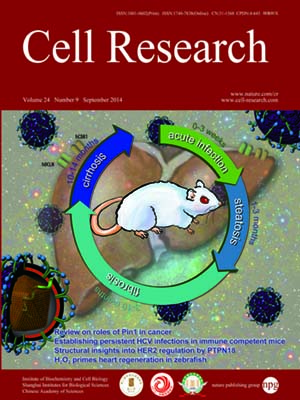
Volume 24, No 9, Sep 2014
ISSN: 1001-0602
EISSN: 1748-7838 2018
impact factor 17.848*
(Clarivate Analytics, 2019)
Volume 24 Issue 9, September 2014: 1033-1049
REVIEWS
Prolyl isomerase Pin1 in cancer
Zhimin Lu1,2,3 and Tony Hunter4
1Brain Tumor Center and Department of Neuro-Oncology, The University of Texas Graduate School of Biomedical Sciences at Houston, Houston, TX 77030, USA
2Department of Molecular and Cellular Oncology, The University of Texas Graduate School of Biomedical Sciences at Houston, Houston, TX 77030, USA
3Cancer Biology Program, The University of Texas Graduate School of Biomedical Sciences at Houston, Houston, TX 77030, USA
4Molecular and Cell Biology Laboratory, Salk Institute for Biological Studies, La Jolla, CA 92037, USA
Correspondence: Zhimin Lu, Tel: 713-834-6231; Fax: 713-834-6230 E-mail: zhiminlu@mdanderson.org; Tony Hunter, Tel: 858-453-4100; Fax: 713-834-6230(hunter@salk.edu)
Proline-directed phosphorylation is a posttranslational modification that is instrumental in regulating signaling from the plasma membrane to the nucleus, and its dysregulation contributes to cancer development. Protein interacting with never in mitosis A1 (Pin1), which is overexpressed in many types of cancer, isomerizes specific phosphorylated Ser/Thr-Pro bonds in many substrate proteins, including glycolytic enzyme, protein kinases, protein phosphatases, methyltransferase, lipid kinase, ubiquitin E3 ligase, DNA endonuclease, RNA polymerase, and transcription activators and regulators. This Pin1-mediated isomerization alters the structures and activities of these proteins, thereby regulating cell metabolism, cell mobility, cell cycle progression, cell proliferation, cell survival, apoptosis and tumor development.
10.1038/cr.2014.109
FULL TEXT | PDF
Browse 2212


